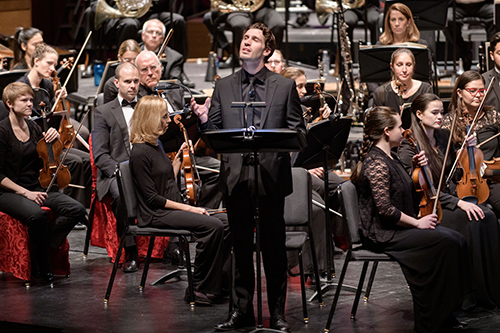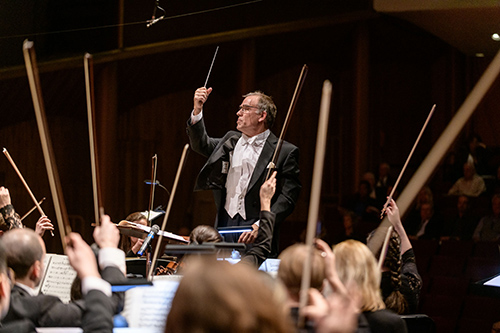by Nicholas Stevens

Music director and conductor Christopher Wilkins opened the program on Saturday, October 19 with a swell of sound worthy of E.J. Thomas Hall’s grandeur. Organist Robert Mollard thickened and strengthened the group texture in Ethel Smyth’s Overture to The Wreckers. The orchestra built to a thrilling climax, but just before this peak, principal trumpet Justin Kohan delivered a lovely, lyrical solo. The composer’s last bit of misdirection before a crashing conclusion, the passage suggested a moment of false hope in Smyth’s non-Shakespeare-based but darkly Shakespearean opera about collective violence, intrigue, and betrayal in a small coastal town.

Though their reading from music stands blocked engagement with the audience to some extent, the actors raged and contemplated convincingly as the music roiled beneath. Great percussion playing enlivened the ghost’s scene, in particular some spirited gong strikes. The timbre of a synthesized harpsichord rang out in the poisoning scene, jarring if heard as a Shakespearean sound but oddly appropriate for Shostakovich’s space-age moment in history. Concertmaster Tallie Brunfelt stopped time with a short, sweet solo, our one glimpse of Ophelia.
The Akron Symphony Chorus emerged for William Walton’s Henry V: A Shakespeare Scenario, another suite from a cinematic score. (The “Henriad” plays have continued to fascinate writers and directors, as the recent release of the Netflix film The King attests.) Sounding strong from the opening sunburst of harmony — surely an intentional homage to Ravel’s Daphnis et Chloé — to the camp triumphalism of the concluding carol, the choristers added immeasurable depth to the performance.

Published on ClevelandClassical.com November 5, 2019.
Click here for a printable copy of this article



